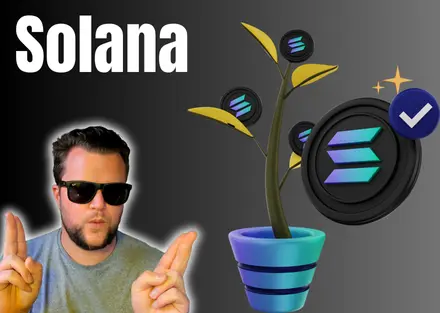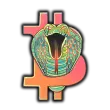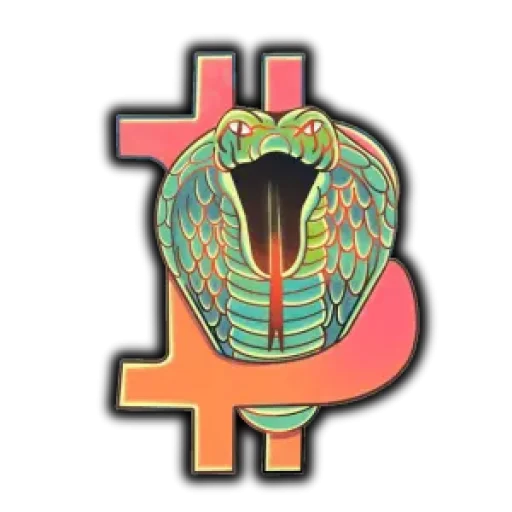Since Bitcoin’s inception in 2009, blockchain technology has undergone extraordinary evolution. Ethereum revolutionized smart contracts, yet Solana has emerged as a formidable force, tackling the persistent scalability issues that earlier blockchains faced. This article delves into Solana’s groundbreaking approach, its sophisticated architecture, the ecosystem’s expansion, and its prospective impact.

Unraveling Solana
Solana is a high-caliber blockchain platform engineered to support decentralized applications (dApps) and cryptocurrencies with unparalleled speed and scalability. Unveiled in March 2020 by Anatoly Yakovenko and his team, Solana aspires to resolve the blockchain trilemma, which asserts that a decentralized network cannot concurrently achieve scalability, security, and decentralization.
Technical Framework
Solana’s architecture is distinguished by several pivotal innovations:
Proof of History (PoH): At the core of Solana’s efficiency lies Proof of History, a cryptographic clock that enables nodes to agree on the chronological order of events without direct communication. PoH operates by embedding the passage of time into the blockchain, allowing transactions to be timestamped and sequenced autonomously, thus significantly reducing transaction confirmation times.
Tower BFT: Solana employs Tower Byzantine Fault Tolerance (BFT), an enhanced version of Practical Byzantine Fault Tolerance (PBFT). Tower BFT harnesses the synchronized clock provided by PoH to attain consensus with minimal message exchanges, thereby decreasing latency and augmenting throughput.
Turbine: For data dissemination, Solana utilizes Turbine, a block propagation protocol inspired by BitTorrent. Turbine fragments data into smaller packets and distributes them across the network, ensuring efficient and reliable transmission even within extensive networks.
Gulf Stream: Solana’s mempool-less transaction forwarding protocol, Gulf Stream, facilitates transaction caching and forwarding to the network’s periphery, enabling validators to preemptively execute transactions and substantially accelerating transaction processing speeds.
Sealevel: Solana’s parallel smart contract runtime, Sealevel, permits multiple smart contracts to execute concurrently across GPUs and SSDs. This parallelization markedly enhances the efficiency and speed of smart contract execution compared to Ethereum’s single-threaded approach.
Pipelining: Solana adopts a pipelining process for validation, akin to CPU design, where various stages of transaction processing occur simultaneously. This assembly line-like methodology further amplifies throughput.
Cloudbreak: Solana’s horizontally scaled state architecture, Cloudbreak, optimizes data storage and access by employing a structure that facilitates concurrent reads and writes across the network.
Archivers: Data storage is managed by a consortium of nodes called Archivers. These nodes do not engage in consensus but handle the blockchain’s historical data, ensuring Solana’s scalability by offloading storage responsibilities from the validator nodes.
Solana Ecosystem
Since its inception, Solana has fostered a dynamic and rapidly expanding ecosystem:
Decentralized Finance (DeFi): Solana has drawn numerous DeFi projects due to its high throughput and low transaction costs. Platforms like Serum, a decentralized exchange (DEX) created by FTX, utilize Solana’s speed to provide a seamless trading experience with minimal fees.
Non-Fungible Tokens (NFTs): The NFT surge has positioned Solana as a significant player, with platforms like Solanart, DigitalEyes, and Magic Eden offering marketplaces for creating, purchasing, and selling NFTs. Solana’s low fees and swift transaction times make it a compelling alternative to Ethereum for NFT initiatives.
Web3 Applications: Solana underpins a broad array of Web3 applications, from decentralized social media platforms to gaming and metaverse projects. The scalability and efficiency of Solana render it an ideal foundation for these next-generation internet applications.
Bridges and Interoperability: Solana has integrated with various blockchain bridges, such as Wormhole, facilitating seamless asset and data transfer between Solana and other blockchains like Ethereum, Binance Smart Chain, and Terra. This interoperability enhances the functionality and reach of Solana-based projects.
Community and Development
Solana’s success is also attributed to its robust community and developer support. The Solana Foundation and Solana Labs offer extensive resources, including funding, technical support, and educational materials, to stimulate innovation and growth within the ecosystem. Hackathons and developer grants have attracted global talent, leading to a proliferation of new projects and applications on the Solana blockchain.
Challenges and Criticisms
Despite its advantages, Solana faces several challenges:
Centralization Concerns: Critics contend that Solana’s high-performance nature comes at the expense of centralization. The need for powerful hardware to run validator nodes means fewer participants can afford to join the network, potentially centralizing power among a few nodes.
Network Outages: Solana has experienced several high-profile network outages, raising concerns about its reliability. These incidents have been attributed to software bugs and high transaction volumes overwhelming the system.
Competition: Solana operates in a fiercely competitive environment, with other blockchains like Ethereum 2.0, Binance Smart Chain, and Avalanche also vying for dominance. Continuous innovation and improvements are essential for Solana to maintain its edge.
Future Outlook
The future appears promising for Solana as it continues to innovate and expand its ecosystem.
Key areas of focus include:
Scalability Enhancements: Solana aims to further improve its scalability through ongoing research and development. Enhancements to the PoH algorithm, consensus mechanisms, and data propagation protocols are expected to boost the network’s performance.
Decentralization Initiatives: To address centralization concerns, Solana is exploring ways to lower the barrier to entry for validators. Initiatives to support smaller validators and optimize the network’s hardware requirements are in the works.
Ecosystem Growth: Solana’s ecosystem is poised for continued growth, with more DeFi, NFT, and Web3 projects launching on the platform. Partnerships with traditional financial institutions and mainstream adoption of blockchain technology could further propel Solana’s prominence.
Regulatory Compliance: As blockchain technology gains mainstream acceptance, regulatory compliance will become increasingly important. Solana is likely to engage with regulators to ensure that its platform aligns with legal standards while preserving its decentralized ethos.
Sustainability: Solana is also focusing on sustainability, exploring ways to minimize its environmental impact. By optimizing energy consumption and exploring carbon offset initiatives, Solana aims to contribute to a greener blockchain future.
Conclusion
Solana represents a significant leap forward in blockchain technology, offering unprecedented speed and scalability without compromising security or decentralization. Its innovative architecture and thriving ecosystem position it as a formidable contender in the blockchain space. While challenges remain, Solana’s commitment to continuous improvement and community engagement suggests a bright future ahead. As the blockchain industry evolves, Solana is poised to play a pivotal role in shaping the decentralized future.
FAQs About Solana
What is Solana?
Solana is a high-performance blockchain platform designed to support decentralized applications (dApps) and cryptocurrencies. It offers exceptional scalability and speed, capable of processing thousands of transactions per second (TPS) with low transaction fees. Solana’s innovative architecture, including Proof of History (PoH) and other unique technologies, sets it apart from other blockchain platforms.
How does Solana achieve high transaction speeds?
Solana achieves high transaction speeds through several key innovations:
Proof of History (PoH): A cryptographic clock that timestamps transactions, enabling efficient and fast consensus without extensive communication between nodes.
Tower BFT: An optimized consensus algorithm that leverages PoH for reduced latency and improved throughput.
Turbine: A data propagation protocol that breaks data into smaller packets for efficient distribution across the network.
Sealevel: A parallel smart contract runtime that allows multiple smart contracts to run simultaneously, improving execution speed.
These technologies work together to enable Solana to process transactions quickly and efficiently.
What are some key use cases for Solana?
Solana supports a wide range of use cases, including:
Decentralized Finance (DeFi): Platforms like Serum utilize Solana’s speed for efficient trading and financial services.
Non-Fungible Tokens (NFTs): Solana hosts NFT marketplaces such as Solanart and Magic Eden, offering low-cost and fast transactions for buying and selling digital art.
Web3 Applications: Solana supports various Web3 applications, including decentralized social media, gaming, and metaverse projects.
Interoperability: Bridges like Wormhole allow Solana to interact with other blockchains, enhancing its versatility and functionality.
How can I get started with Solana?
To get started with Solana:
Create a Wallet: Set up a Solana-compatible wallet, such as Phantom, Sollet, or Ledger.
Acquire SOL Tokens: Purchase SOL tokens on cryptocurrency exchanges like Binance, Coinbase, or FTX.
Explore dApps: Visit Solana’s dApp ecosystem and start interacting with decentralized applications, including DeFi platforms, NFT marketplaces, and more.
Develop on Solana: If you’re a developer, explore Solana’s documentation, SDKs, and participate in community forums and hackathons to build your own projects on Solana.
By following these steps, you can begin exploring the opportunities and innovations that Solana offers.


